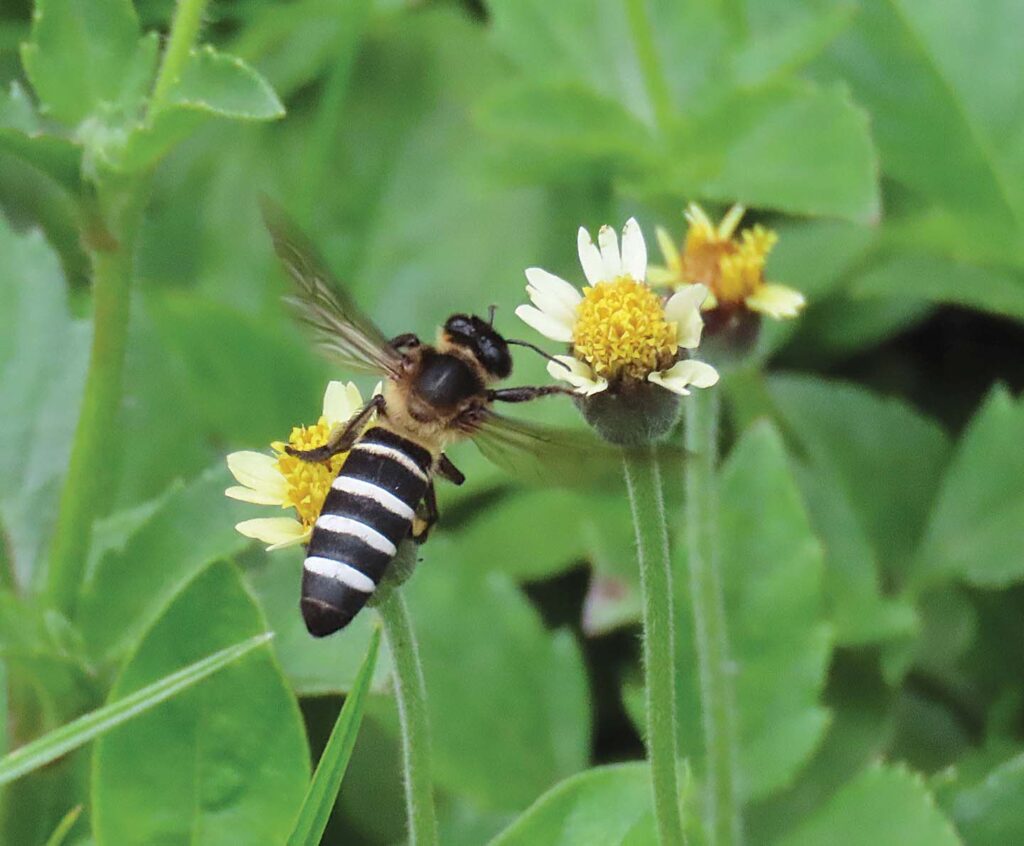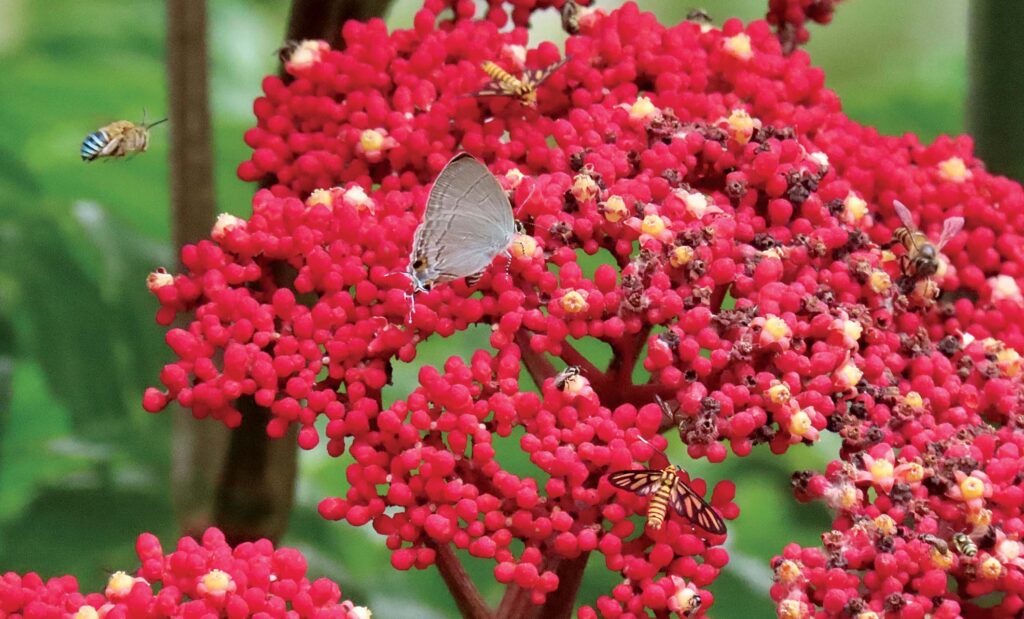In the previous issue, we met some solitary Bees you might see at home. This time, let’s meet a couple of Honeybees, including a special guest: an adorably tiny stingless Bee!
EASTERN HONEYBEE
The Eastern Honeybee (Apis cerana) is probably one of the more common Bees you might meet. These Bees are native to the Philippines, but they can also be found in Japan, Russia, and even in West Asia. They build their nests in hollow trees, but there are also instances of them nesting in hollow walls.
These Honeybees are team players! When threatened by predatory Hornets, Eastern Honeybees will work together to form a tight ball around the intruder and vibrate their thorax muscles to raise the temperature. According to a 1987 study by Ono, Okada, and Sasaki in the journal Experientia, this can bring the temperature up to 46°C, high enough to kill the Hornet but not the Bees.
Meanwhile, according to the 2015 article by Ashley A. Egelie for the University of Florida, Eastern Honeybees are known to be docile and shy, unlike their big sister, the Giant Honeybee.

Eastern Honeybee on coat buttons. (Janina Castro)
Eastern Honeybees look pretty similar to the European Honeybee (Apis mellifera). The main difference is that Eastern Honeybee workers have four black stripes, while European Honeybees have only three. Apis cerana’s stripes are also darker and more pronounced than Apis mellifera’s.
GIANT HONEYBEE
The bigger and somewhat more intimidating Giant Honeybees (Apis breviligula) are distinctly larger and darker colored than Eastern Honeybees. Also locally known as Putyukan or Pukyutan, they can be found in South and Southeastern Asia.
According to a 2019 article by Cameron J. Jack for the University of Florida, these big fellas build large hanging nests that are covered in a protective layer of living worker Bees. This protective layer makes the brood strong enough to withstand wind and rain.
Probably one of the more unusual traits of Giant Honeybees is that they seasonally migrate by rebuilding their hive in another location. They leave behind their empty comb and move on to maximize nectar and pollen availability.
Because their hive is exposed, Giant Honeybees are known to create shimmers when agitated by predatory Wasps known to snatch Bees up in mid flight, as stated in Susan Milius’ 2019 article in the ScienceNews website.

A Giant Honeybee on some coat buttons. (Janina Castro)
If you see Giant Honeybees in your garden, take care not to agitate them — they have a painful sting that can penetrate clothing!
STINGLESS BEE
If you look closely at your flowering plants, you might notice small Fly-looking Insects enjoying the delicious nectar and pollen. These are very likely Stingless bees (Genus Trigona), a small and often overlooked Bee species because of their size.
According to a 2014 article by Julian Wright, if you were to look closely at these Ant-sized Bees, you’ll see that they have the pollen “basket” on their back legs and a furry body perfect for gathering pollen. Despite their size, they can fly up to a kilometer away from their nest to find food. They’ll even remember the best places for pollen and nectar near their home and visit that location more often.

According to Tim Heard’s article in the 1999 Annual Review of Entomology journal, Stingless Bees are known to be very efficient in pollinating more than 90 different kinds of crop species. Thanks to them, we can enjoy fruits and vegetables, such as sweet peppers, tomatoes, eggplants, rambutan, lanzones, and mangoes, according to a 2012 article by Jose Travero published in the International Journal of Environmental and Rural Development.
FOR THE BEES’ BENEFIT
Our wild Bees are in danger! Habitat loss, pesticides, and a lack of native flowering plants and trees are all threats that our native Bees are facing. You can help them out by avoiding pesticides in your garden and protecting their nests if they build colonies around your neighborhood.
Next time you see one busy Bee buzzing around, don’t be afraid to say hello and thank them for the amazing job they’re doing at helping grow all kinds of produce, and for keeping the local ecosystem healthy!

Native trees like this Mali-mali are a huge hit with local pollinators! (Janina Castro)






